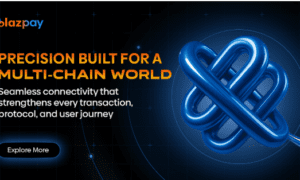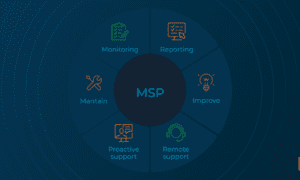The implementation of new technology marks a change in any business in question. It does not stop at the moment of acquiring the platform with companies that invest in the HubSpot onboarding. This is because your usage and adoption of HubSpot will be what directly defines how effective your marketing and whether your sales pipeline is visible or not, and how well you can manage your relationship with your customers. When done properly, the onboarding process may help the teams get in sync, embrace the platform fairly quickly, and realize all the potential of the investment.
Julia found out that the following are the best practices every business should imitate in
order to make its HubSpot onboarding process designed, effective, and long-term oriented.
- Have Clarity of Goals and Objectives.
When entering HubSpot, businesses should be informed as to what they wish to achieve. HubSpot is a powerful solution that includes marketing automation, CRM, sales, service and operation. Lack of clear goals could bring the teams to their knees.
Onboarding objectives are common and include the following:
Automating the work of lead nurturing.
Improving the open rates and the click rates in email marketing.
Streamlining marketing to sales sales handoff.
Enhancing openness of the customer lifecycle.
The existence of quantifiable objectives at the start of teams will assist them in organizing HubSpot functions according to their business plan and not feel their way in the dark with the instruments.
- Get Leadership Buy-In Early
HubSpot should be top-down supported in order to be implemented best. The approval of leadership is a guarantee that the onboarding process is assigned the necessary resources (in terms of time, money and training) appropriately. When the decision-makers feel the value that HubSpot can bring about, they can help in adoption on a basis of the organization.
Without a leadership buy-in the teams may not be utilizing the platform to their fullest potential or even worse drop-out of the platform in the process of utilizing it as they lack the direction.
- Wash and Peach Data.
One of the most urgent activities of HubSpot onboarding is data migration. The companies can possess years of contacts, leads and customer information in various systems. Introduction of unverified or out of date information into HubSpot can cause duplication of records, incorrect report and poor performance of the campaign.
Best practices include:
Cleaning migration database prior to migration.
The naming of contacts and deals must be standardized.
Mapping the properties to HubSpot fields in a reasonable manner.
Making a small test import before migration has been done.
Rushing to clean data entry is not worth doing since it is one of the investments that will turn HubSpot into a single source of truth.
- HubSpot made to Your Processes.
HubSpot is also not a strict framework but the default settings are not always typical of your sales cycles, services model, and industry needs. During the onboarding process, businesses would have been mandated to customize pipelines, deal stages, custom properties and dashboards.
To illustrate this point, a B2B SaaS firm might require such phases as Demo Scheduled or Trial Started, but an e-commerce firm might be interested in the abandoned cart workflows. Personalization keeps HubSpot on track with your internal business operations rather than attempting to adapt the internal teams to a poorly designed framework with a default design.
- Train Teams Thoroughly
Even in the most intuitive tools, no training is required. HubSpot offers training resources, certifications and the knowledge base, but the individual training of the team as the part of the onboarding is invaluable.
Key training tips:
Organize training sessions (sale associates, service agents, marketers) on jobs.
Give practical teachings about real information in the company.
Sponsor employees who succeed in HubSpot Academy.
Have in-house HubSpot evangelists to offer 24/7 assistance.
The more the team is trained, the more possibilities to accept the platform and use all its possibilities it has.
- Automate, But Start Small
HubSpot is exceptionally luminous with regard to automation, regardless of marketing operations, lead scoring, or ticket routing. Automation should however be undertaken in phases during the onboarding.
Start by work processes that are simple, e.g. welcome email on subscription of new contacts. Then move on to even more advanced automations like nurturing campaigns, sales follow up sequences or customer feedback loops. This gradual approach will make the team members not to be overworked and they will be able to learn along the way.
- Dashboards and Leverage Reporting.
One of the largest strengths is HubSpot analytics. During the onboarding, the most appropriate thing would be to institute dashboards that align with their goals, i.e. marketing ROI, pipeline velocity, or customer satisfaction grades.
Key reports to prioritize:
Origins and conversion rates of the lead.
Time to close deal Sales time.
Channel performance and campaigns.
The retention and churn measures on the customer.
Both to keep the teams on track by frequently checking such dashboards on whether they are on track or need to sharpen their strategies.
- Integrate Current Tools to HubSpot.
HubSpot is hardly ever operating in a vacuum. Most of the companies are already using such tools as Salesforce, Shopify, Zoom, or Slack. Integrating HubSpot and these platforms is one of the best practices in the onboarding since it would have a smooth workflow.
For instance:
Installing HubSpot CRM and an ERP to monitor the orders.
Integrating with webinar tools to get on board the registrants.
Combining with customer support to have ticket management.
Such integrations make HubSpot even more powerful and reduce the labor done manually.
- Contract a HubSpot Certified Partner.
Despite the fact that the self-onboarding process in most businesses is attempted, the work can be significantly accelerated in case it is done in collaboration with a HubSpot partner certified. HubSpot partners possess experience and best practices and implementations.
The benefits of employing a partner are:
Customized onboarding approach to your industry.
Fast problem solving and troubleshooting.
Training on more complicated functionality like custom reports, or workflows.
Continued optimization following the onboarding.
The HubSpot partner can become trusted associate in the company that is not new to CRM or marketing automation and not to fall into the traps of these applications.
- Develop an Army of Continuous Improvement.
Onboarding is not the ultimate goal, but the starting point. As soon as HubSpot has been put in place at the first stage, the businesses must think of HubSpot as a living tool which will continue to grow with their strategy. Re-discover and retest new automation and change dashboards as the aim evolves.
To know what is working and what should be altered, the teams should be reviewed on a quarterly basis. Being committed to getting better will ensure that HubSpot can deliver ROI after every year.
Final Thoughts
HubSpot onboarding is not a mere process of learning to use a tool, but bringing technology and business goals together, empowering the teams, and setting the business to scale. Examples of the best practices that businesses would tend to maximize their investments are objective definition, data cleaning, workflow customization, and a HubSpot partner.
Properly used, HubSpot is not merely another CRM or marketing workflow software, but a platform that allows reaching the customer and motivates the business growth.



































